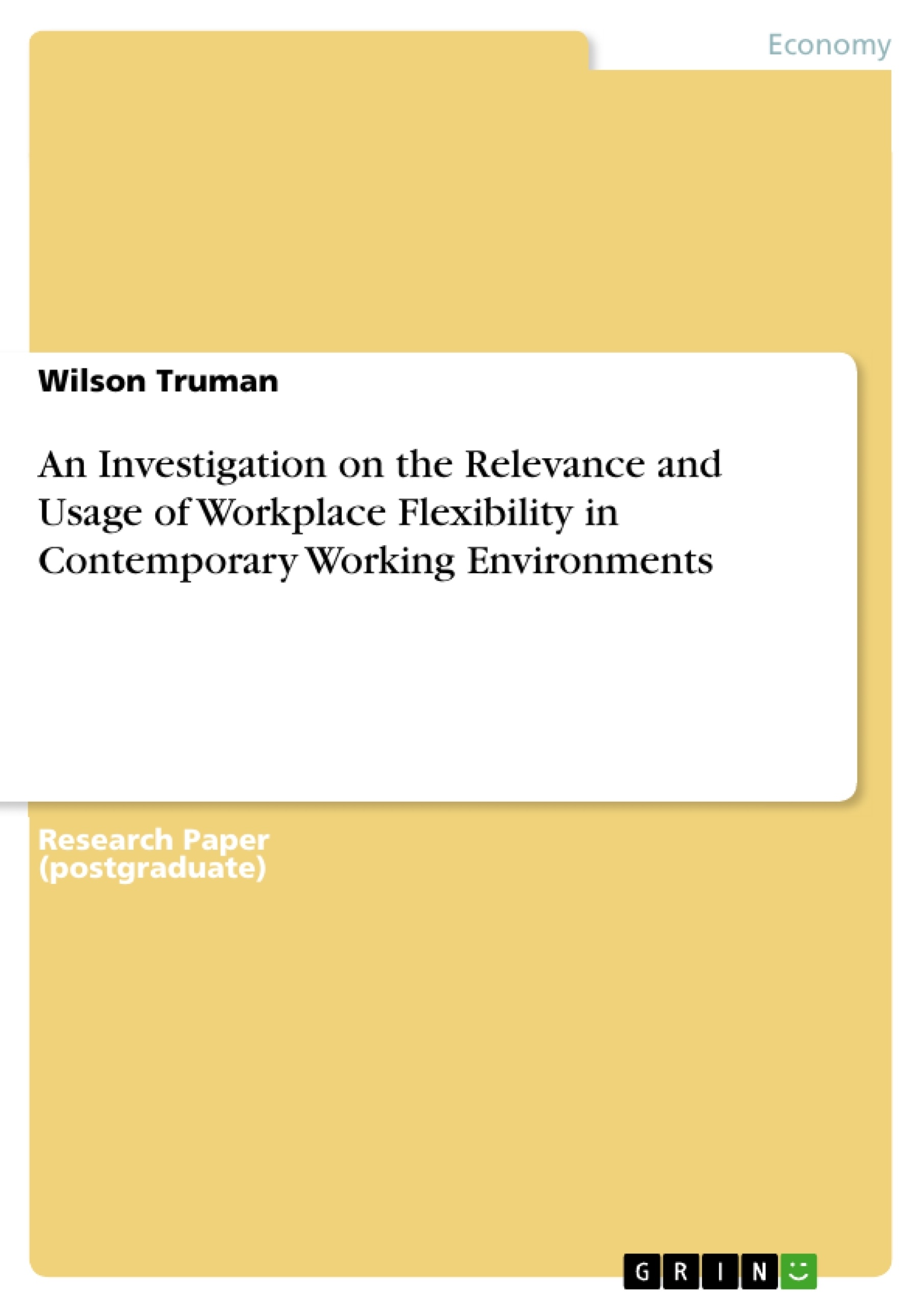Workplace flexibility remains an unexploited, under-used and under-supported concept in contemporary HRM prospects despite its significant impacts in motivating employees, facilitating a balance of family and work obligations as well as setting the company in the competitive field through quality delivery and production. As such, there is an imperative need to establish the relevance and level of use of workplace flexibility from a holistic viewpoint considering both the employer and workers standpoints. This is bearing in mind that the implementation of workplace flexibility is characterized by laxity and informal stipulations making it not only an organization’s strategy problem but also a policy issue. A literature analysis in this context explains the situation better with a number of supporting workplace flexibility as affirmative to employee and job satisfaction and motivation. From the employer’s perspective, it ensures optimal delivery within a non-limited span of time and with superior and inimitable quality for a better chance in the competitive battle. Conversely, employees find it an avenue for exploitation in terms of poor remunerations and leave rewards among other engagement and inclusion issues in workers and employer relations. Employer’s also find workplace flexibility as an avenue for workers to exploit their resources and vandalize them despite the high opportunity cost resultant in inducing such undertakings. This research intends to apply a mixed approach of research to establish the findings. Using a sample of 55 subjects comprising of workers on full and part-time basis as well as managers (employers) data collation will occur using focus groups, semi-structured questionnaires (on-line surveys) and interviews will be used. Statistical analysis using ANOVA and SPSS for descriptive, inferential and correlative analysis will transpire to investigate and establish the level of use and relevance of workplace flexibility.
Inhaltsverzeichnis (Table of Contents)
- 1.0 CHAPTER 1
- 1.1 Introduction
- 1.2 Statement of the Problem
- 1.3 Research Objectives
- 1.4 Research Questions
- 1.5 Significance of the Study
- 2.0 CHAPTER TWO
- 2.1 Literature Review
- 2.1.1 Relevance of Workplace Flexibility
- 2.1.2 The Level of Using Workplace Flexibility in Contemporary Firms
- 3.0 CHAPTER 3
- 3.1 Methodology
- 3.1.1 Sampling Procedure
- 3.1.2 Measures
- 3.1.3 Data Collection
- 3.1.4 Data modeling and Analysis
- 3.2 Expected Results
- 3.3 Project Schedule
- 4.0 References
Zielsetzung und Themenschwerpunkte (Objectives and Key Themes)
This research aims to investigate the relevance and usage of workplace flexibility in contemporary working environments. It aims to explore the impacts of workplace flexibility on both employers and employees, considering the various perspectives and challenges associated with its implementation. The research seeks to understand the level of use and relevance of workplace flexibility from a holistic viewpoint, taking into account both the employer and employee standpoints.
- Relevance of Workplace Flexibility
- Impacts of Workplace Flexibility on Employees and Employers
- Challenges and Opportunities of Implementing Workplace Flexibility
- Level of Use and Relevance of Workplace Flexibility in Contemporary Firms
- The Role of Workplace Flexibility in Competitive Advantage and Organizational Success
Zusammenfassung der Kapitel (Chapter Summaries)
Chapter 1: Introduction provides a comprehensive overview of workplace flexibility as a multifaceted concept, examining its definitions, classifications, and relevance in contemporary working environments. The chapter explores the significance of workplace flexibility for both employees and employers, highlighting its potential benefits for employee satisfaction, work-life balance, and organizational competitiveness. It also delves into the challenges and complexities associated with implementing workplace flexibility policies and practices. The chapter ends by outlining the problem statement, research objectives, research questions, and the significance of the study.
Chapter 2: Literature Review reviews existing literature on workplace flexibility. This chapter focuses on the various perspectives and interpretations of workplace flexibility, examining its relevance in contemporary organizations and the levels of usage across different industries and sectors. It explores the diverse range of benefits and drawbacks associated with workplace flexibility, considering the perspectives of both employees and employers. The chapter also examines the existing research on the impact of workplace flexibility on employee motivation, productivity, and overall job satisfaction.
Chapter 3: Methodology details the research approach and design used in this study. The chapter outlines the specific methods used for data collection, including the sampling procedure, measures employed, and data analysis techniques. It explains the rationale behind the choice of methods and provides a clear roadmap for the research process.
Schlüsselwörter (Keywords)
The research focuses on the contemporary working environment and the relevance and usage of workplace flexibility, encompassing both the employer and employee perspectives. Key concepts include workplace flexibility, employee satisfaction, work-life balance, employee motivation, organizational performance, competitive advantage, organizational culture, and human resource management.
- Quote paper
- Wilson Truman (Author), 2011, An Investigation on the Relevance and Usage of Workplace Flexibility in Contemporary Working Environments, Munich, GRIN Verlag, https://www.grin.com/document/269937



